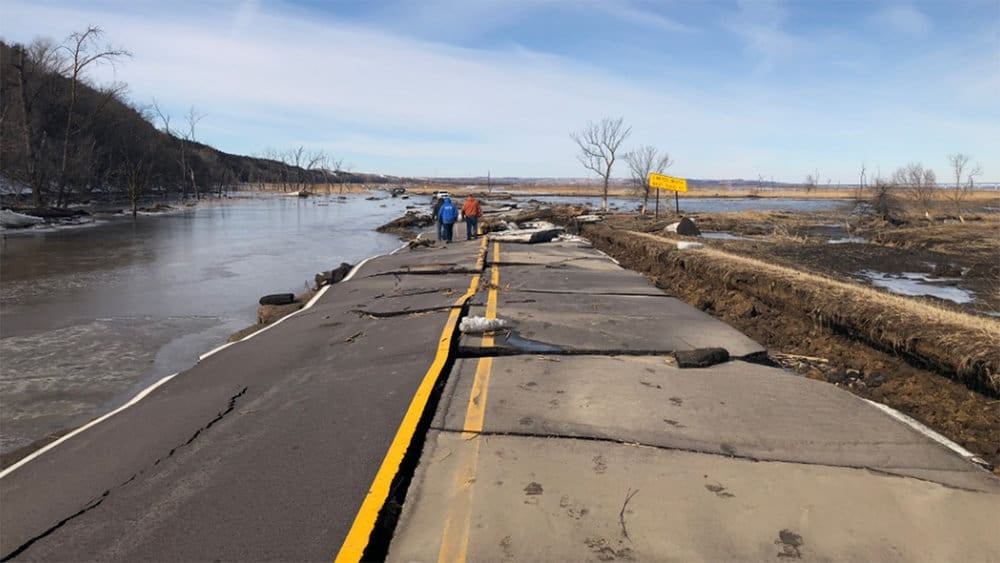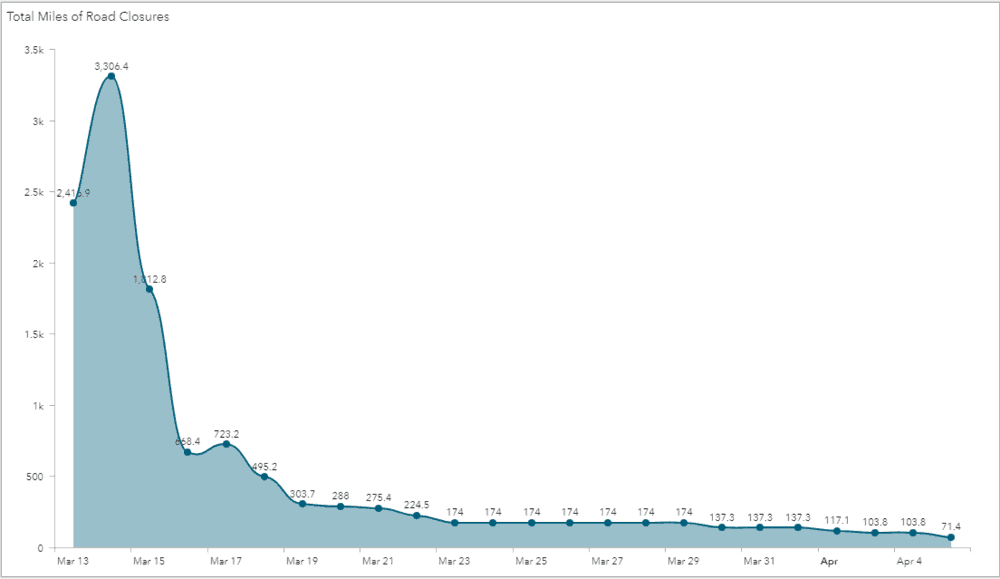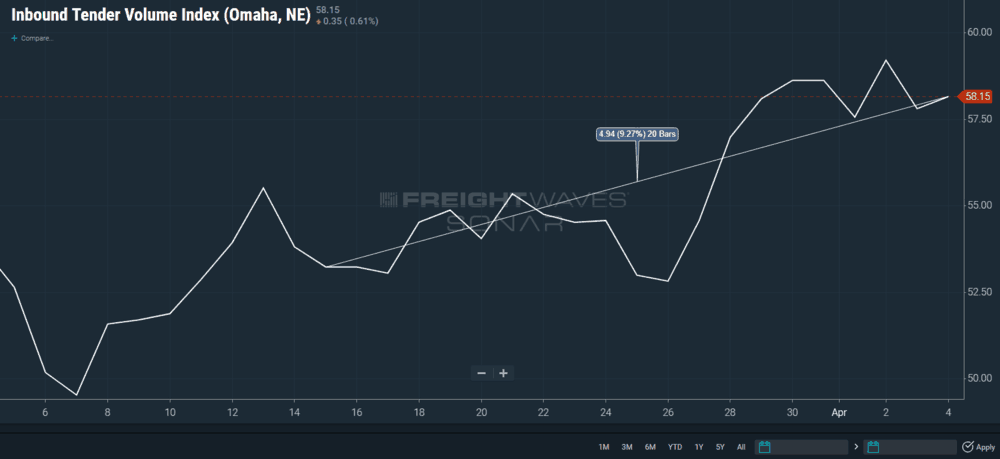
Historic flooding began drowning eastern Nebraska and western Iowa on March 15 – three weeks ago today. The result of a ‘bomb cyclone” – a low pressure system that strengthened rapidly – neighborhoods along the Missouri River, including in Omaha, were almost totally underwater. A few people died, and thousands of others have had to start their lives all over again.
Nebraska

The record flooding also washed out roads, bridges and rails, putting a near halt to transportation through the region. But teams have been putting their blood, sweat and tears into repairs, making pretty quick progress in many areas.
At the peak of the flooding, more than 3,000 miles of roads were closed across Nebraska due to blizzard conditions or water damage. By March 23rd, as the waters receded, less than 200 miles remained closed; now, less than 75.
The floods caused an estimated $100 million in damage to the state’s highway system, and around $60 million in damages to local roads on federal aid routes. Portions of I-80 and I-680 were closed for a couple weeks or so, but are now running at a fair pace. Plenty of other routes that didn’t have major damage have reopened. But bridge projects will take longer to finish.
A segment of US-281 just west of the Niobrara River Bridge was washed out. This is in northeastern Nebraska near the South Dakota border. The existing bridge is in good shape, but NDOT is planning to build a new bridge to span the newly created channel. The new bridge will take significant time to construct because it will be longer than the previous bridge. The tentative plan is to use a temporary bridge to accommodate traffic during construction. NDOT anticipates temporary bridge placement by August of 2019, with the permanent bridge in place during the winter of 2020.
Work has started on the repairs to US-275 in the Omaha metro area. This includes complete replacement of damaged pavement, as well as bridge replacement which NDOT expects to finish this summer.
Two bridges were closed on State Route 12 east of Niobrara due to flooding. The first bridge, just west of town and over the Niobrara River, sustained damages to the west approach and the steel girders. NDOT will be repairing this bridge and returning it to service. The second bridge, over the Mormon Canal, was washed out and NDOT will install a temporary bridge to provide access while a new bridge is constructed in its place. Additionally, the pavement between the two bridges has sustained major damage and will have to be replaced. The temporary bridge for the Morman Canal should be finished by August 2019, with the permanent bridge completed by the summer of 2020.
Iowa
Crews in Iowa are making good progress, too. Only around 48 miles of damaged roads remain unrepaired statewide, according to the Iowa Department of Transportation. One lane in each direction is open on I-29 between North 25th Street in Council Bluffs and the I-680 interchange, and I-680 is open to the Mormon Bridge. Other repairs on these routes, in addition to US-34 and State Route 2, are in progress or complete. Here’s the breakdown, as of April 2, 2019, of how much needs to be done:
• 6.5 miles severe road damage
• 6.1 miles of roads underwater
• 17.2 miles of severe shoulder damage
• 6.6 miles of minor shoulder damage
• 12 miles of shoulder underwater
Governor Kim Reynolds (R-Iowa) and Governor Pete Ricketts (R-Nebraska) issued disaster proclamations in order to better coordinate recovery efforts between state and local officials, and possibly receive federal funding to help cover the repair costs.

Impact on Freight
As roads reopen, as well as rails that were damaged, trucks and some trains have been able to get through areas that were once flooded. The latest SONAR data from FreightWaves shows an increasing trend of inbound truck volume into Omaha (ITVI.OMA) since flood waters began receding around March 23. Since the flooding began on March 15, inbound volume has increased a little more than 9 percent. This may be due, in part, to recovery supplies being trucked into the area since the Federal Motor Carrier Safety Administration (FMCSA) issued an Emergency Declaration on March 19, exempting drivers from hours of service and other regulations if they are providing direct assistance to affected states.











